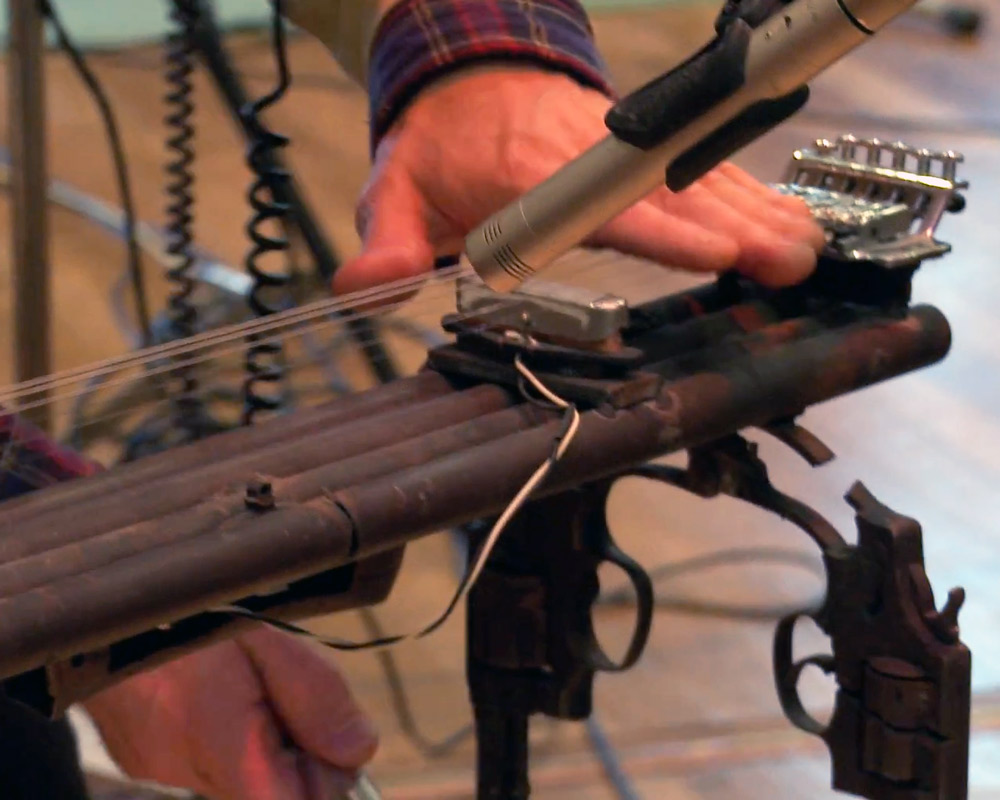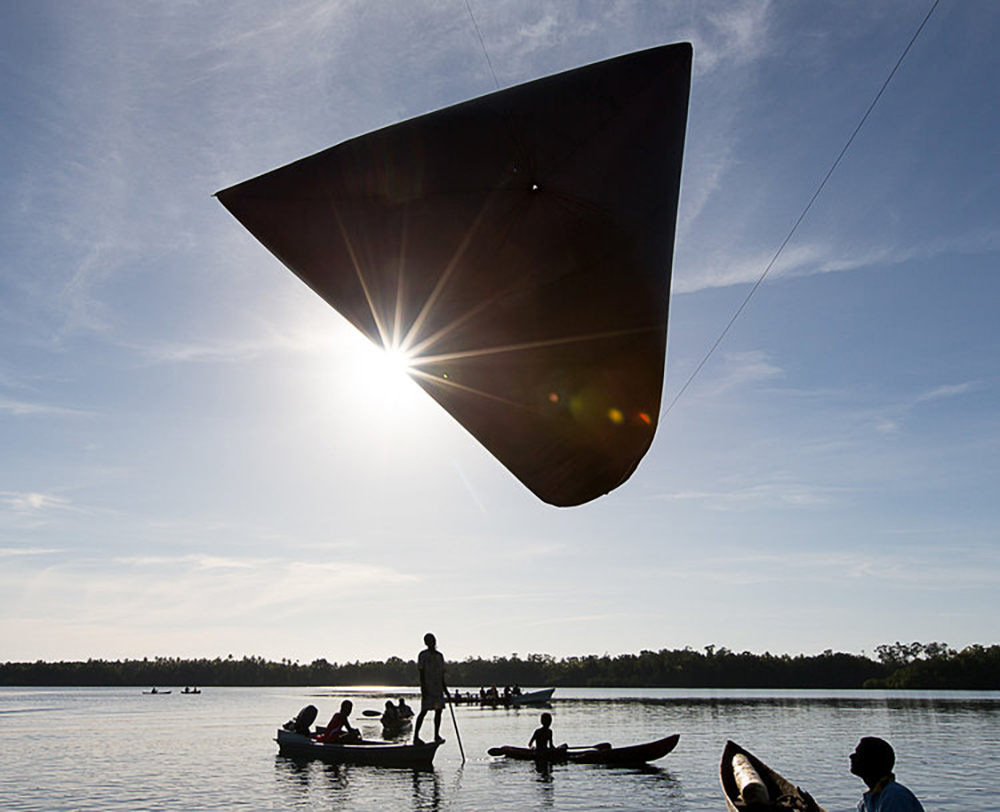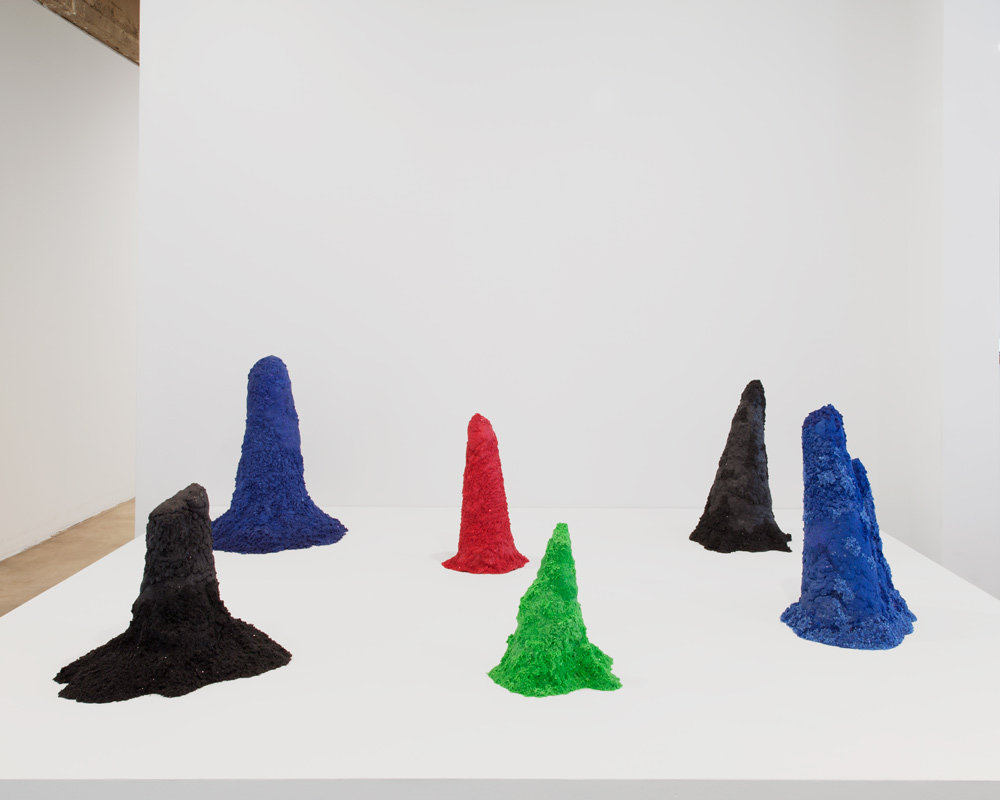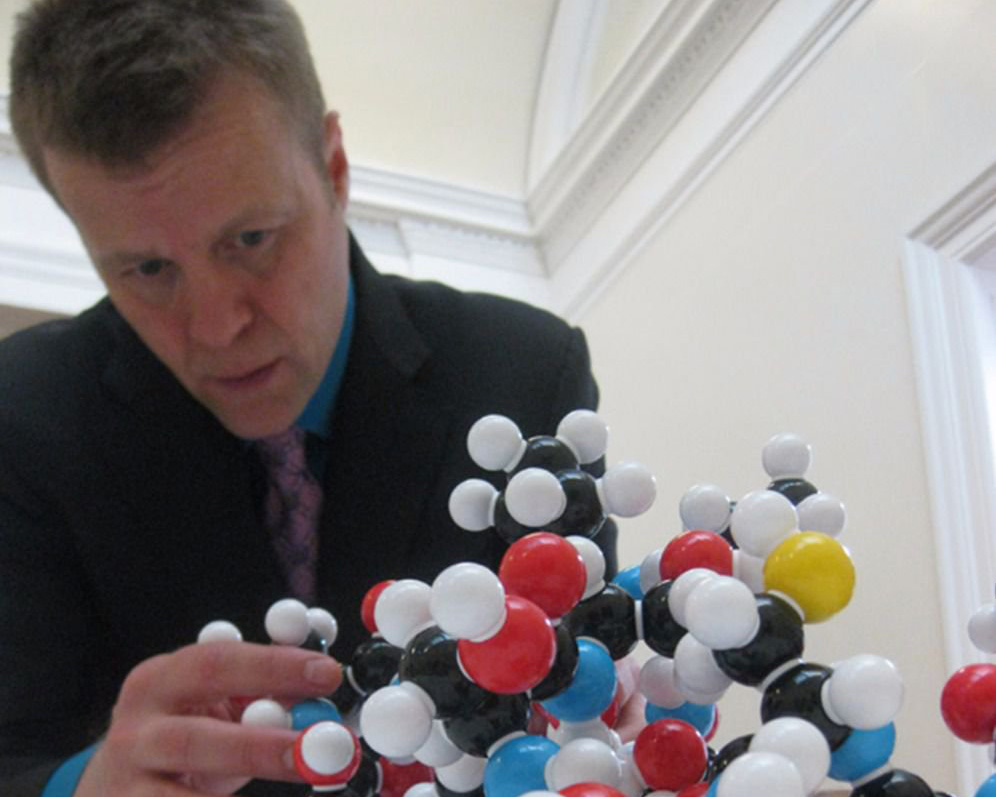The MIT Center for Art, Science & Technology (CAST) is pleased to announce the 2016-17 Visiting Artists in visual arts and writing: Pedro Reyes, Tomás Saraceno, Karim Ben Khelifa, Agnieszka Kurant and Christian Bök. From repurposed and reimagined weapons to immersive installations that use the latest virtual reality technology and artificial intelligence research to “chemical alphabets” translated into DNA sequences, these artists will experiment with a broad range of evocative materials and new modes of artistic expression.
Since the establishment of the Center in 2012, CAST has sponsored more than 35 visiting artists and collaborative projects with MIT faculty, students and researchers. Visiting Artists are chosen in response to an open call to all departments, labs and centers to host creative collaborations, and they are selected by a committee composed of faculty, museum and student representatives. CAST’s annual new music series, MIT Sounding, is now in its third year and will feature acclaimed musicians in twelve concerts in 2016-17.
CAST residencies allow artists to focus on the research and development phase of their work and to engage with ongoing teaching, artistic creation and scientific exploration across campus. As the New York Times notes, “MIT is at the forefront of this cross-disciplinary movement with its institutional commitment, but it is drawing on a legacy of artists who are interested in science that dates back to Leonardo da Vinci and that has proliferated as technology has become ever more commonplace and accessible.”
You can learn more about all our visiting artists and their residencies here. Please join us for the public events with these artists. Subscribe to our mailing list and blog for the latest information.
2016-17 CAST Visiting Artists
Pedro Reyes, CAST’s inaugural Dasha Zhukova Distinguished Visiting Artist, is a multidisciplinary artist based in Mexico City, whose sculptural, performative and participatory works address social and political issues. Reyes integrates elements of theater, psychology and activism in his works. For Palas por Pistolas (2008), 1,527 guns were destroyed to make shovels to plant 1,527 trees. For Disarm (2012), Reyes transformed 6,700 military weapons into a series of musical instruments. At MIT in fall 2016, he will teach “The Reverse Engineering of Warfare: Challenging Techno-optimism and Reimagining the Defense Sector (an Opera for the End of Times).” Through the use of performative techniques and conflict resolution theory, this course will explore ethical questions underlying the relationship between technology and security through the design and enactment of a multimedia performance whose plot, script and stage setting will be designed by the class participants. This undertaking will be informed by topics such as imperialism, defense budgets, representations of violence in pop culture, the history of engineering and military technology and global imbalances created by the Western fixation on technological advancement. A culminating performance in Spring 2017 will be open to the public.
As a CAST Visiting Artist since the residency program’s inception in 2012, Tomás Saraceno has developed collaborative projects with the Department of Civil and Environmental Engineering and Department of Earth, Atmospheric and Planetary Sciences (EAPS) to advance his ongoing Cloud Cities, Hybrid Webs and Aerocene series of works. For his Aerocene project, Saraceno deploys aerosolar inflatables, both in installations and through test flights, which he envisions as “climate-conscious sculptures of orbs floating in the stratosphere.” Made from silver and transparent Mylar, they are kept afloat by solar and infrared radiation and designed to travel on the jetstream. Meteorologist Lodovica Illari in EAPS, along with Professor of Oceanography Glenn Flierl and researcher Bill McKenna, are collaborating with the artist by developing simulations of the sculptures’ potential flight paths and duration, work that will be presented in the World Economic Forum Annual Meeting in Davos in January 2017.
Award-winning photojournalist Karim Ben Khelifa, who is widely known for his coverage of the Iraq and Afghan wars, shifted from conflict photography to virtual reality in search of a more effective way to document the lives of the fighters. The Enemy is an immersive installation that uses virtual reality to bring the audience into contact with soldiers from opposite sides of longstanding global conflicts. He is collaborating with Fox Harrell of the Imagination, Computation and Expression (ICE) Laboratory. Together, they are incorporating concepts from cognitive science and artificial intelligence-based interaction models into the project, with the goal of testing whether a VR installation can engender empathy and self-reflection.
Agnieszka Kurant, an interdisciplinary conceptual artist, investigates how immaterial and imaginary entities, such as fictions, phantoms and emergent processes, influence political and economic systems. Kurant, the Ida Ely Rubin Artist in Residence at CAST, in collaboration with Boris Katz, Principal Research Scientist at MIT Computer Science & Artificial Intelligence Laboratory (CSAIL) and head of the InfoLab Group, will analyze the crossover between collective intelligence and artificial intelligence and their emergence in Amazon Mechanical Turk communities. Their research will inform crowd-sourced artworks.
Christian Bök, a bestselling author and a founder of Conceptual Literature, a poetic school of avant-garde writing, will work with Nick Montfort, Professor of Digital Media in Comparative Media Studies, Writing, and other MIT faculty, students and researchers in biosciences to advance the genetic engineering and proteomic engineering phases for his current project, The Xenotext. For this work, Bök uses a “chemical alphabet” to translate a poem into a DNA sequence, which he then implants into the genome of an unkillable bacterium; once integrated into the organism, the poem acts as a set of instructions that causes the bacterium to manufacture a protein—which is itself another text, according to the original “chemical alphabet.” The Xenotext acts as both a durable archive for storing the poem and a machine for writing a poem.
On the Record, a series of discussions and workshops presented by CAST and the Department of Architecture, focuses on the public aspects of research and new platforms for disseminating collaborative work. Led by prominent artists, designers and publishers, these conversations and public experiments examine how extra-architectural and artistic practices, such as publications, exhibitions, models, performances and events, create shared territories for collaborative practices and expand audiences.








